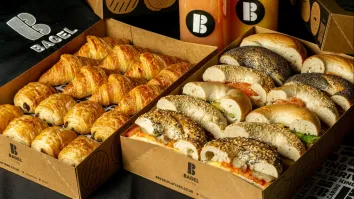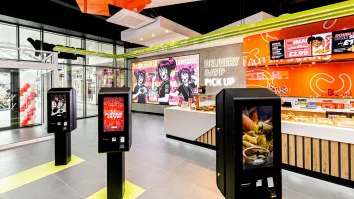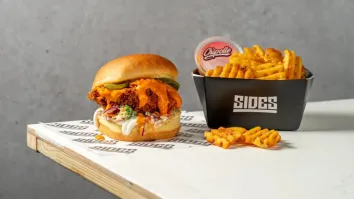10 marketing lessons from how millennials are changing the way we eat
From the rise of alcohol-free, to the growing importance of experience, new research reveals the restaurant brands attracting millennials.
"Millennials" is not a term we like, but it has become an easy shorthand for the audience that came of age in the smartphone era. As a collective, they are better connected than any group before them and have choice at their fingertips. It’s their native understanding of this new two-way information channel that separates them from their forebears.
More importantly, UK dining-out expenditure by 18- to 30-year-olds is already worth £27bn annually – 30% of total spend. So it’s important for businesses looking for brand advantage to get their approach to this growing generation right.
Based on BrandVue Eating Out – our daily survey of the top 150 UK eating out brands, with 100,000 interviews each year – we’ve looked at who is winning share of wallet and what can all operators in the sector can learn from high indexing brands.
Brands that are winning over Millennials
Of the dozen over-indexing brands, two are burger joints (Five Guys and Shake Shack), three are focused on premium soft drinks (Shakeaway, Creams and Joe & the Juice) and the others are fast-casual operators (Tortilla, Roosters Piri Piri, Barburrito, Wok&Go, Chilango, Chipotle and Coco di mama). Apart from speed and convenience almost all of them can be enjoyed without cutlery, most are new to the market, and they are virtually alcohol-free.
Here are 10 ways to attract millennials to all restaurant tables:
1. A razor sharp offer
A huge array of fledgling and established brands are competing, so it is critical to have a razor sharp offer. Think Wagamama, Nando’s, Five Guys – brands that people have a clear focus in people’s minds. Never try and stand for too much to too many.
2. Social beyond the table
Photos and short clips are the main social currency. Platforms like Instagram are used for sharing and finding venues, and at serious volumes. Today there are over 380 million posts under #foodporn and #food. So culinary presentation and innovation, the ambience and décor of your space are essential elements.
Maxwell’s routinely produce innovative food items: the burger cheesebomb, unicorn freakshakes and donut burger. All are shareable sensations and they believe this has generated an extra £1m worth of sales in the last two years. That’s £10,000 a week!
3. Offer new experiences
Innovation in food and experiences taps in to this generation’s demand for social capital. Sharing their life across their networks is second nature. Think Secret Cinema, urban golf at Swingers, butchery demos at Flatiron. Doing interesting and alternative things to the conventional "having a meal out" is a differentiator.
4. Take health and wellbeing seriously
Health and wellbeing (despite the donut burgers and freakshakes) is another important trend. Almost a quarter of the younger generation have an allergy or food intolerance – 50% higher than their elders. A few years back vegan, gluten-free, vegetarian were niche concerns. Now they are critical to success – Pret's veggie pop-ups and veggie fridges demonstrates this demand:
"We had expected sales in the shop to decline as a result of the pop up. After the massive hype of the first few weeks, sales at Veggie Pret are still well up on where they were before." Clive Schlee, Pret chief executive, said.
5. Alcohol-free options
Another health factor is drinking less. Teetotals make up more than one in five young people. So grown-up alcohol free drinks are crucial. Seedlip is very much the brand of the moment and PizzaExpress is benefiting from this trend with its guilt-free gin and tonic.
6. Humour
By now there will be a temptation to think that this generation are a somewhat precious lot. But they do also like to laugh at themselves. Their peers invented the meme, and brands that carefully mock themselves are well regarded. Being too controlling of the conversation doesn’t work.
BrewDog sums this up nicely. Instead of being apologetic about those that dislike the brand, they wear their comments (quite literally) as badges of honour. Playing to the subversive nature of the young at heart.
7. True authenticity
This ability to laugh at themselves doesn’t mean you can fake it. When terms such as cultural appropriation get used on a daily basis, it is crucial that brands are true to themselves and the culture they are representing. Franco Manca is a great example. They use authentic Italian flour, and cook in wood-fired traditional ovens.
8. Value + quality
Graduates are only paid a little more than when I came into work in 2000. Great value is paramount, but they don’t want to compromise on quality. As with Flatiron, wherever possible it is worth working with shorter menus, building strong supplier relationships and using unorthodox cuts of meat to reduce costs. Offer outstanding quality without huge prices – a great steak for a tenner.
9. Naturally omni-channel
Delivery is augmenting where millennials eat, growing 10 times faster than the core dining-in market. Technology means services like Deliveroo are improving the choices available at home. This is the so-called Netflix generation. But as changing demands are affecting the dining market, they also change the work-life balance. So making the most of time at home with friends and family is vital, and operators need to seamlessly cater to these growing food occasions.
10. Consistently speedy service
Consistent service is a unifying factor. Think Nando’s. Great food, rapidly served. This consistency has to be the case on delivery, dining-in and engaging this generation.
Although this might feel like a lot for each dining out brand to consider, it is worth remembering the starting point. This generation is well connected, well informed and immersed in choice. These elements are almost the standard for this generation and if you don’t offer it, they will head somewhere that can.
This article was written by Morar HPI. For more information, visit their website here.























